



-(1)-202408140552.gif)

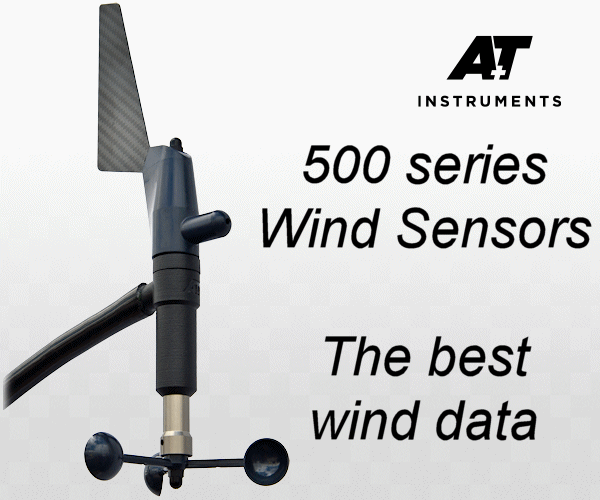


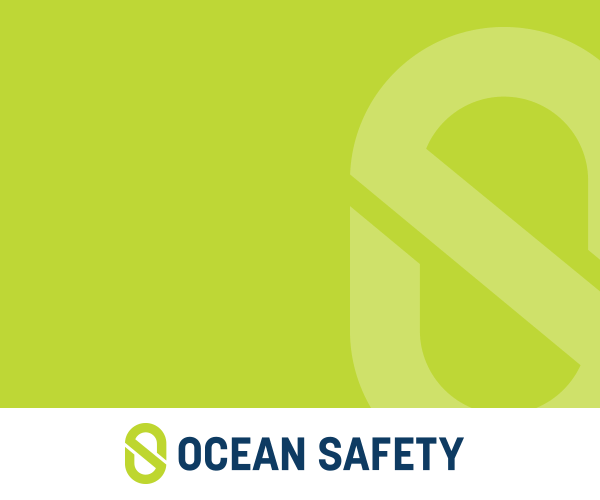


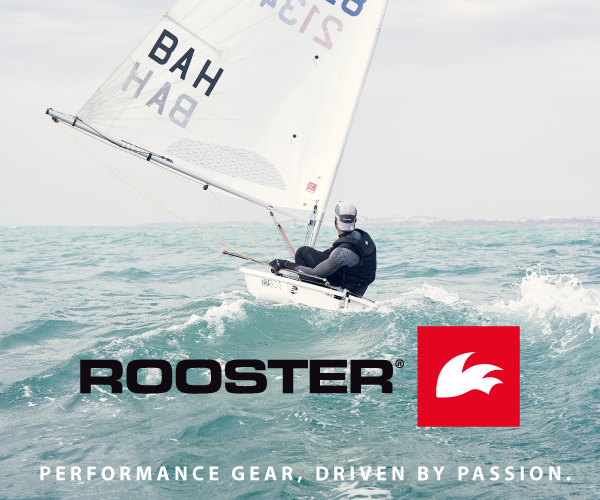
Boats for sale
| Rossiter Pintail Mortagne sur Gironde, near Bordeaux |
 |
| Laser 28 - Excellent example of this great design Hamble le rice |
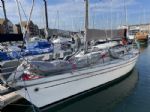 |
List classes of boat for sale |
Asymmetric technique |
Post Reply 
|
Page 12> |
| Author | |
Wetabix 
Posting king 
Joined: 15 Feb 10 Location: United Kingdom Online Status: Offline Posts: 118 |
 Post Options Post Options
 Quote Quote  Reply Reply
 Topic: Asymmetric technique Topic: Asymmetric techniquePosted: 09 Apr 19 at 9:14pm |
|
I have been attempting to race a small asymmetric for about five years without much success, Would somebody write about 100 words on how you do it? Specifically, how do I know how deep to sail, what am I looking at and what am I trying to achieve. What do I do to get the boat moving after a gybe? My boat has an unusual boomless rig and will not go downwind unless in apparent wind mode. Most sailing books concentrate on the upwind leg and nearly all assume you are sailing a Laser, I have not found one that covers a slow asymmetric such as the RS200. I have watched every race in the World Match Racing tour for the last five years but don't seem to have learnt very much from it. There are no other boats like mine within 300 miles so no 2 boat training sessions. Help!
|
|
 |
|
giraffe 
Posting king 
Joined: 10 May 07 Online Status: Offline Posts: 148 |
 Post Options Post Options
 Quote Quote  Reply Reply
 Posted: 09 Apr 19 at 9:59pm Posted: 09 Apr 19 at 9:59pm |
|
What type of boat do you have?
How much does it weigh? How long is it? How much sail area does it have? These are key factors |
|
 |
|
iGRF 
Really should get out more 
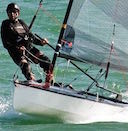
Joined: 07 Mar 11 Location: Hythe Online Status: Offline Posts: 6499 |
 Post Options Post Options
 Quote Quote  Reply Reply
 Posted: 09 Apr 19 at 10:32pm Posted: 09 Apr 19 at 10:32pm |
|
Simple, a slow Assymmetric just won't work, all you can do is try to sail as deep and as direct to the mark as you can if it's a dead run. In order for an Assymmetric to beat a Symmettric down wind it must be planing fast and even then if there are shifts it would have to play them, down wind headers are your friend, you get to bear off and when it's gone gybe and attempt to practise gybing without coming off the plane.
I spent years in dinghys trying to emulate what boards do all the time adn very very rarely achieved a perfect downwind leg on the sausage section, during that time I sailed L3ks, RS400s, RS500s and the Alto (an Assym 505) and quite honestly I think unless you're in something really quick like the V3000 RS800 or 29/49er you'll struggle against syms and the RS200? Not a planing boat so doesn't really cut it. |
|
 |
|
Wetabix 
Posting king 
Joined: 15 Feb 10 Location: United Kingdom Online Status: Offline Posts: 118 |
 Post Options Post Options
 Quote Quote  Reply Reply
 Posted: 10 Apr 19 at 6:32am Posted: 10 Apr 19 at 6:32am |
|
OK, take a heavy non planing but quite quick symmetric like a classic N18. They sail angles downwind as do reasonably quick keelboats such as those used in the Congressinal Cup. So for a start, how do I know what angles to sail? You can feel it up to a point but once you head up to apparentwind on the beam speed you are giving up a lot of Vmg against (say) a Phantom (to which I have to give time).
|
|
 |
|
boatshed 
Far too distracted from work 
Joined: 12 Apr 05 Online Status: Offline Posts: 457 |
 Post Options Post Options
 Quote Quote  Reply Reply
 Posted: 10 Apr 19 at 8:01am Posted: 10 Apr 19 at 8:01am |
|
Even fast asymmetric boats like the B14 and 49er struggle dead down wind in non planing winds. But it's possible to mitigate the hull drag by getting the crew weight well forward and healing the boat to leeward.
In these fast asymm boats it's pretty obvious when there is sufficient breeze to hot them up and sail the angles down wind. I assume by you're name you sail a Weta. From what I can see from photos, this boat will "stick" in light winds without much scope to change that because of the outrigger hulls. Hence it'll be frustratingly slow at times. Some long hulled boats like yachts can benefit from sailing slight angles downwind in light winds to achieve hull speed. Cats, the Int Canoe and low rider Moths can also benefit as they can cheat their theoretical hull speeds. Probably best stick to class racing in a Weta or accept it will only perform in a fairly narrow envelope of wind strength and course setting. Edited by boatshed - 10 Apr 19 at 8:07am |
|
|
Steve
|
|
 |
|
JimC 
Really should get out more 

Joined: 17 May 04 Location: United Kingdom Online Status: Offline Posts: 6662 |
 Post Options Post Options
 Quote Quote  Reply Reply
 Posted: 10 Apr 19 at 8:06am Posted: 10 Apr 19 at 8:06am |
|
Look at the published polars for any keelboat and you'll see that dead downwind is slow in anything. But because it feels so slow I think very few sailors actually do it. I suspect anyone with an ounce of feel for the boat naturally sails a few degrees off without realising. It would be an interesting exercise, if you think you're sailing dead downwind to flick the boom across and see if the other gybe feels exactly the same. If it doesn't...
Edited by JimC - 10 Apr 19 at 8:06am |
|
 |
|
Guests 
Guest Group 
|
 Post Options Post Options
 Quote Quote  Reply Reply
 Posted: 10 Apr 19 at 8:07am Posted: 10 Apr 19 at 8:07am |
|
Weta trimaran?
I'd have no idea. But I have done almost all my sailing in monohull asymmetrics. The 200, 800 and 29er / 49er all feel pretty similar in gauging when to heat it up. The difference is it happens at about 8-9 knots in the 49er, 10-12 knot in the 29er / 800 and 15 knot in the 200. Because of it's hull shape the 200 has the biggest surge when planning, but drags the biggest wake if you push to hard to early, so the gains and losses for mode choice are larger. One difference is that in 29er /800 to a certain extent, and the 49er completely, the apparent win is so far forward that you're using main-sheet tension to control mainsail twist as the boom will be fairly close to centre. Unlike upwind you can afford a much deeper twisted sail. However, in the 200, because of less apparent, the boom never comes in quite far enough to get much downward tension on the boom, so you'll need to use kicker to get desired twist. I imagine the weta feels difficult in this regard as with no boom and no kicker the sail could feel over twisted. As for telling when to transition I think the biggest tells are the wake and spinnaker. The spinnaker will be cut for a certain apparent wind angle, and there's not much you can do to it's shape to alter that. If it's strapped and feels unsettled then that a sure sign you're pushing too hard too early. The wake is the biggest thing though. Move your weight out slowly as you head up. Don't try to transition straight out of a gybe. In marginal conditions you'll need o build speed in the soaking mode first. If the transition is good the wake should flatten and the angle change should be minimal. If there is a noticeable kink in your wake and noticeable stern wave then it's not good. But... this might not be applicable to a trimaran with no boom. This might be more akin to cat sailing technique.
|
|
 |
|
Wetabix 
Posting king 
Joined: 15 Feb 10 Location: United Kingdom Online Status: Offline Posts: 118 |
 Post Options Post Options
 Quote Quote  Reply Reply
 Posted: 10 Apr 19 at 11:05am Posted: 10 Apr 19 at 11:05am |
|
Well thanks for that, guys. You are, of course, correct about the class. FWIIW, where I am now is: if the RO sets a ww/lw course I don't race - I go out into the Firth, crank everything in and blast reach until I am frozen in the spray. If it is very light and shifty I put up my over-size mainsail and look for the puffs. If it is classic 8-14 knots and there is at least one triangle/fetch in the course or if the run is one sided I give it a go. My current technique (partly gleaned from Randy Smyth on the Weta forum is to leave the sails as they are as you round the top mark, deploy the A-sail and cleat it, set the main as far out as it will go (which is not very far), set the jib about half way out, just drawing and then steer the boat to keep the apparent wind on the beam. DO NOT soak below this unless you are within the three length zone where forcing people to go round the outside is the greatest benefit of three hulls. Last week's insight was that the difference between soaking too far and pointing up for speed is that the apparent wind will change through about forty degrees even when the boat is turned through only about 15 degrees. As you come out of a gybe or bear away at the ww mark you MUST point up until you get some speed and then look at nothing else other than the windex (which you keep on the beam) until the next gybe. As you approach the leeward mark note that the Streaker which was behind you at the windward mark is now ahead of you but try not to get TOO depressed - you have had a much less boring run!. I have tried to get some polars off the Velocitek but wind and tide screw the geometry up and I have not got anything useful off it.
|
|
 |
|
CT249 
Far too distracted from work 
Joined: 08 Jul 06 Online Status: Offline Posts: 399 |
 Post Options Post Options
 Quote Quote  Reply Reply
 Posted: 10 Apr 19 at 11:32am Posted: 10 Apr 19 at 11:32am |
|
We shared the course with Wetas for some time and I can't recall them being slower than a Streaker style of boat. Their yardstick down here is about 30% quicker and they do well against the 14 ft cats downwind in the light. They could be hard to drop off with a Hurricane 5.9 type at times.
One of our clubmates is an Olympic silver medallist in cats and the current world classic A Class champ (he was fourth in the foiling A Worlds). He has enormous twist in the main downwind in light winds and says that unless the bottom of the sail is sheeted in 30 degrees more than the mid and top sections (which have attached flow as shown by the leech ribbons) then he can't go. He is also carrying about 19% draft at mid height in the mainsail, which is remarkably deep for such a high aspect sail and fast boat. To me that would imply that maybe you could not worry about the inherent twist in a mainless boat; just let the main twist off with eased sheet. Certainly in our F18, which we have used very little, we are finding that mainsail twist is very important downwind. I notice that the Weta vid by Jonathon Weston seems to show lots of mainsail twist and good speed. It may also be that you are being distracted by trying to learn an unusual boat while racing. Maybe spending more time playing at getting the angles right, rather than either racing or reaching, could be the key. One of my boats (a yacht) is currently in fairly slow assy mode. Like similar boats like J/109s, she runs quite deep under assymetric spins with the tack line eased off to allow the sail to rotate out to windward. The Weta's kite is much flatter, if I recall, but there's a (very) small chance that easing the tack line and rolling the kite to windward could work in very light stuff.
Edited by CT249 - 10 Apr 19 at 11:42am |
|
 |
|
Wetabix 
Posting king 
Joined: 15 Feb 10 Location: United Kingdom Online Status: Offline Posts: 118 |
 Post Options Post Options
 Quote Quote  Reply Reply
 Posted: 10 Apr 19 at 12:23pm Posted: 10 Apr 19 at 12:23pm |
|
Well that's very interesting and, in its own way, quite encouraging! The mainsail twist thing is particularly true of my non-class square-top mainsail. Lest it appear that I am knocking the sailing characteristics of a very nice fun boat, I would point out that I am 76 and would not be beating many people to the leeward mark even in a Phantom!
|
|
 |
|
Post Reply 
|
Page 12> |
| Forum Jump | Forum Permissions  You cannot post new topics in this forum You cannot reply to topics in this forum You cannot delete your posts in this forum You cannot edit your posts in this forum You cannot create polls in this forum You cannot vote in polls in this forum |
Bulletin Board Software by Web Wiz Forums® version 9.665y
Copyright ©2001-2010 Web Wiz
Change your personal settings, or read our privacy policy
Copyright ©2001-2010 Web Wiz
Change your personal settings, or read our privacy policy











 Printable Version
Printable Version Delicious
Delicious Digg
Digg Facebook
Facebook Furl
Furl Google
Google MySpace
MySpace Newsvine
Newsvine reddit
reddit StumbleUpon
StumbleUpon Twitter
Twitter Windows Live
Windows Live Yahoo Bookmarks
Yahoo Bookmarks Topic Options
Topic Options